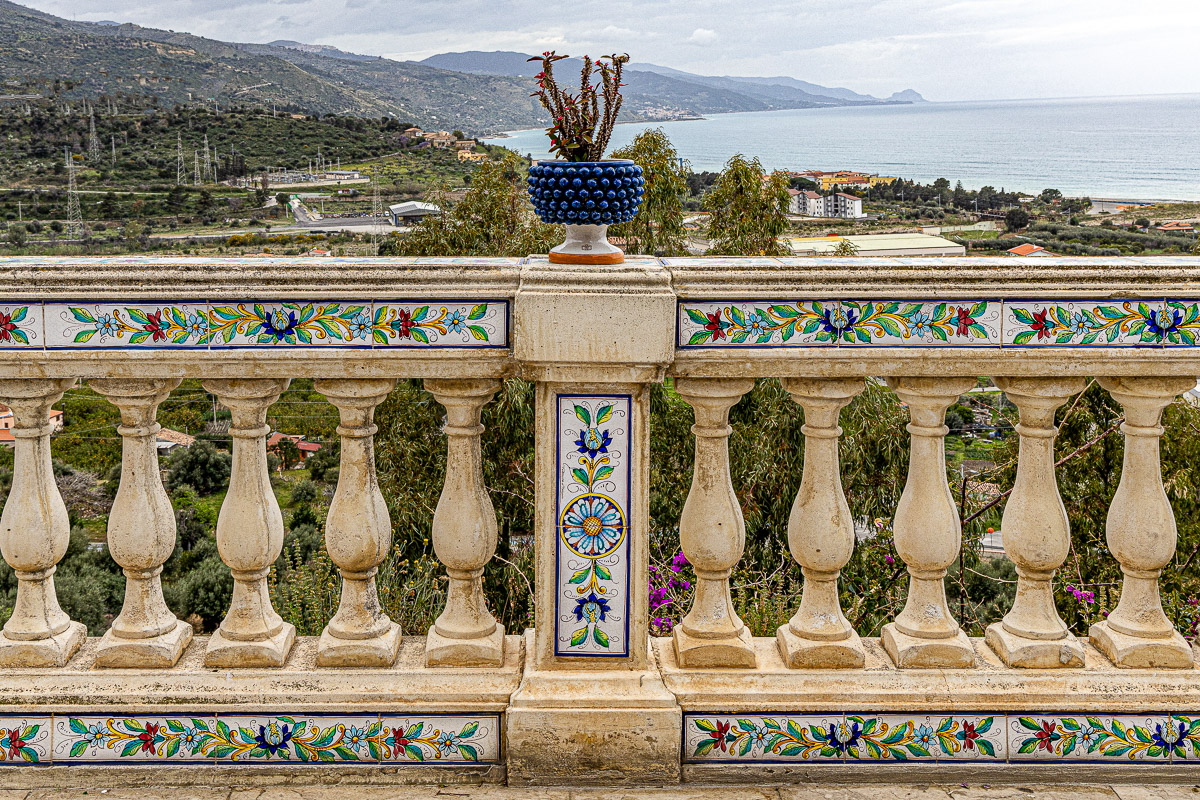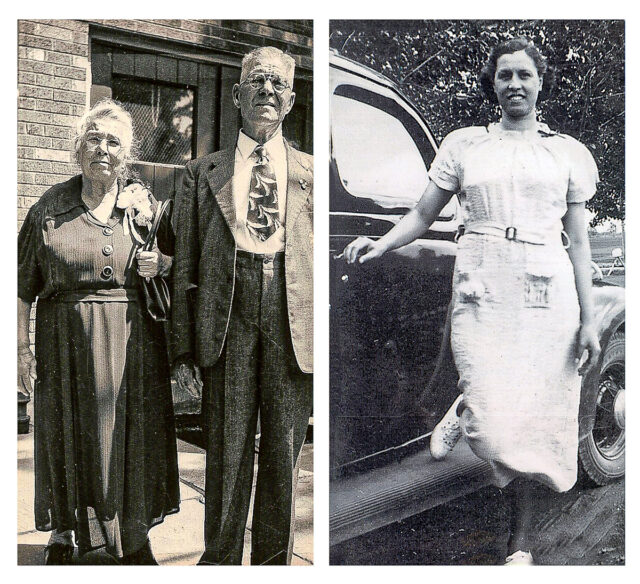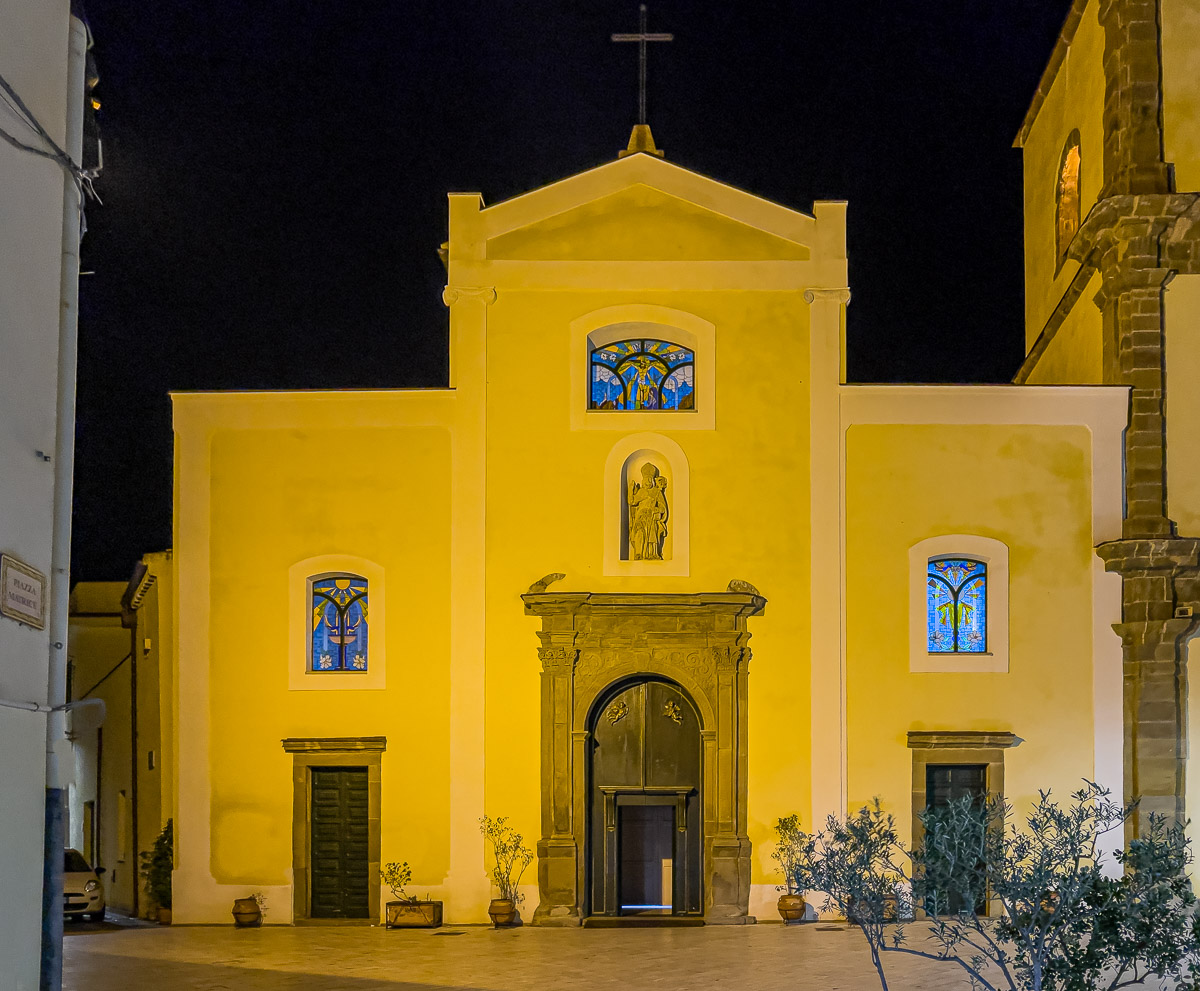We ate a quiet breakfast, packed our bags, and prepared to leave Palermo and the rest of the Road Scholar Treasures of Sicily participants. When we had first met two weeks before, the Group Leader, Enrico Nucci, asked each of us why we had chosen to visit Sicily. Several members of the group said they were interested to see where the HBO series The White Lotus was filmed. I was surprised that no one else had a reason similar to mine; to see where my maternal grandparents came from. So, as the others were heading back home, we were heading east across the northern shore of Sicily to visit Santo Stefano di Camastra.

I knew that my maternal grandparents came to America from Sicily at the beginning of the 20th century. My mother was born in Londondale, Pennsylvania, and I think she was the fifth of eight children. Although I was young when my grandparents passed away, I still have memories of visiting them on Sundays. Some of my aunts would usually be there and the atmosphere was often boisterous. I would play with my cousins in the alley behind the house while the women cooked dinner. The large dining room table would be filled with Italian food. Even if I had already eaten seconds, my grandmother would put more food on my plate and say “Mangia, mangia!” My grandfather made his own wine and used to say, “Water is for washing; wine is for drinking.” Very few photos exist of my grandparents or my mother. Here are two that I have.

My niece had done quite a bit of research on our Italian relatives and learned that they emigrated from Santo Stefano di Camastra. She shared that information with me and told me I could find records by doing a passenger search on the website for The Statue of Liberty — Ellis Island Foundation, Inc. Given that there must be hundreds of millions of records in that data base, I thought it would be a challenge to find them, but a quick search for Pasquale Faillaci and Marianna Maiorana (maiden name) turned up the information shown below. It was very interesting to see copies of the handwritten ship manifests listing their names. Their first child, Sebastiano, is also listed. I remember him as my Uncle Ben. Forty-five years after his arrival, he and his wife, my Aunt Mary, would become my godparents.

Ship’s manifest for the Trojan Prince sailing out of Naples

Ship’s manifest for the Lombardia sailing out of Naples
With all of that information in my head and printed out on paper in my suitcase, our driver headed east from Palermo on the A20 Messina-Palermo highway. We went through quite a few tunnels along the way, some very long, but I didn’t realize it at the time that the A20 holds the world record for the highway with the greatest length in tunnels. On average, for each kilometer of highway the A20 has 650.3 meters of tunnel (65%) — more tunnel than road!
A street closure forced our driver to let us off in town before we reached the apartment we had rented. The street may have been closed because it was Palm Sunday. I called the proprietor and, since we were very close, she walked over and took us back to the apartment, the Casa Luigi Sergio. It was a very nice two-bedroom place with three balconies on the second floor. After settling in a bit we grabbed the complimentary city map and went out for a walk.
Santo Stefano is a small town, the population is only around 5,000, so it’s easy to get around. Since the streets are laid out as a diamond inside a square, there are many narrow streets crossing each other at 45-degree angles. We enjoyed a casual walk around the neighborhood looking at street art on the walls and plants in front of homes and apartments. The city is on a hillside overlooking the Tyrrhenian Sea so there are many beautiful views out across the water. In a small park at the edge of town we saw a war memorial, the Monument to the Fallen of the Wars of Santo Stefano di Camastra.
Mouse over the small photos in galleries to see captions.
Click on any one to enlarge, then use arrows to scroll through the rest of the images.
In the very center of the diamond-inside-a-square street layout is located the town square, the Piazza Matrice. Along the south side of the square is the Church of San Nicolo di Bari. After all of the churches we visited over the past two weeks, it seemed right to go in and take a look around. Maybe it was just force of habit. Unlike the previous churches, this one was much smaller and we were the only ones inside. Despite that, it was a peaceful and beautiful place. I have no idea how many churches there are in town, but I couldn’t help wondering if this is the church where my grandparents were married. Our apartment was only about two short blocks from the church. When I looked at it in the evening the setting was very serene.

There’s still much more to see tomorrow.
<— Food for the Body, Food for the Soul (Sicily Part 12) :: (Sicily Part 14) Ceramics by the Sea —>















